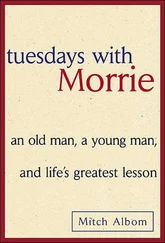It is most distressing for a shepherd to contemplate such savage attacks; to see his defenceless lambs with their eyes pecked out obviously rouses deep emotions which make it hard to keep the problem in perspective. It is difficult to obtain objective and unexaggerated estimates of damage. Burgess (1963) did try to overcome this problem and organised an inquiry covering 155 selected hill-farms in Cumberland and 59 in Westmorland in 1962, after a good deal of publicity to ensure that all incidents would be reported. These farms between them supported some 82,000 ewes and in all 16 attacks on ewes were reported (0.02%). In nearly all cases the ewes attacked were in some difficulty, trapped in snow drifts or hedges, lying on their backs or giving birth. About two-thirds of the attacked ewes did not survive, but a little over half of these were already sick, many suffering from staggers. On the same farms there were 69 attacks reported on lambs, approximately 77,000 being at risk. About half the attacks were made on live lambs (0.04% of lambs at risk) while half again were fit lambs that should have survived. Allowing for unreported cases, the loss of lambs due to crow attack must be well under 0.5% of those at risk.
A pilot survey was conducted in Argyllshire between May and July 1964 (Gailey in litt .) by officers of the Department of Agriculture and Fisheries for Scotland. On 50 farms holding 48,390 ewes and 36,292 lambs*, losses attributable to hoodie crows were 192 ewes (0.4%) and 366 lambs (1%). Losses due to all predatory birds (including eagles, ravens and great black-back gull) amounted to 1% of the total sheep stock, hoodies being responsible for 0.65% of this total. Again, this is a very low percentage of damage particularly as this area of Scotland is generally reckoned to suffer the highest level of crow damage. In Argyll, the average mortality of ewes is 7.4% from November to July and 1.6% from July to November, according to McCreath and Murray (1954). These authors give lamb losses as 13% between birth in April and marking in June, and 5% between marking and sales in September. The sheep stock for the county of Argyll is approximately 450,000 breeding ewes and 338,000 lambs. The application of these results to the whole county would mean a loss of 2,926 ewes and 2,195 lambs to hoodies, which at £ 5 and £ 3 per head respectively at first suggests £ 21,000 worth of damage. But this is the kind of calculation made by the farmer and is quite unjustified. It can be calculated from McCreath and Murray’s mortality data that around 16,000 ewes (3.6%) and 60,800 lambs (18%) would die in the county between April and the September sales, a level of normal wastage far above that of the damage attributable to crows.
The level of damage to sheep seems to be markedly similar in widely separated areas. A survey in Radnorshire, Breconshire and Montgomery in 1969 showed that under 0.01% of 114,751 ewes at risk were attacked by crows, while 0.6% of 119,680 lambs at risk were attacked, the figure becoming 1.4% if only farms where attacks actually occurred are included (K. Walton, in litt.). In Australia, Smith reckoned that avian predators were responsible for the death of less than 2% of the lamb crop, and other Australian studies indicate that the live lambs attacked are already ailing; many have no milk in their stomachs and seem not to be receiving proper maternal care. The work of Alexander et al. (1959) in Australia has shown that sheep in their lambing flocks react relatively little towards foxes, more towards crows and most of all towards dogs. Unlike foxes, crows make very determined efforts to attack lambs.
As already discussed (see here), losses are not additive in these circumstances and it is likely that deaths caused by predatory birds simply improve the survival chances for the remaining animals, so that the final yield is unaffected. There would have to be a very much lower death-rate of sheep and lambs from natural causes before it could be accepted without qualification that predatory birds were depressing the output. The survival of sheep must depend largely on the carrying capacity of the hill, and an effective reduction in sheep mortality would best be obtained by improvements in land management. In large areas of Britain overgrazing and bad land management have been responsible for much sheep carrion, and this in turn supports the predator population. It is this sort of problem that needs evaluation and the immediate answer is not an out-and-out war on the birds. In some circumstances these birds may indeed be troublesome, even allowing for natural losses – but biologists cannot accept the extrapolation of damage costs, as in the example above.
In Britain it is common to see starlings, jackdaws, and less often magpies, associating with livestock and even perching on the backs of the animals. They catch the insects flushed from the ground by the animals’ movements or those attracted to the beasts, such as various flies. In addition, they sometimes search the fur for ticks and other parasites, like the tick-birds of Africa. The habit does not cause trouble in this country but in the U.S.A. magpies (a subspecies of the European form, which has a ring distribution extending all round the world) sometimes become more adventurous. Schorger (1921) and Berry (1922) have described how the birds learned to peck open a small hole in the sheep’s back, which they gradually enlarged until they located the kidneys which provided a favoured delicacy. Unshorn sheep on open range were sufficiently protected by the thick fleece, and it was only after shearing, when the animals were confined to untended paddocks, that the trouble began; possibly the birds were originally attracted by small wounds left by the shearers. Even small sores provide sites for secondary attack by blowflies. This kind of damage is reminiscent of the attacks of the kea parrot of New Zealand.
The progression from a commensal to a parasitic association between bird and mammal host is well seen in the red-billed oxpecker in Kenya. These birds feed on the ticks and other insects gleaned from the larger game animals, and help the host by warning it of impending danger. Occasionally, they also make the most of blood clots and fragments of skin from any abrasion or wound and will purposely open up a sore with hammer-like blows to eat the serum and blood discharged. Van Someren (1951) comments that the wounds inflicted on the livestock are smooth saucer-like depressions, 1–3 inches in diameter, which do not suppurate, perhaps because the birds keep them clean. Oxpeckers feed on open sores by nibbling with a scissor-like motion as if squeezing out the blood and serum. The attacked animals seem untroubled and their wounds rapidly heal if protected from bird attack. The dependence of the oxpecker on ticks is emphasised in districts where insecticide dips are extensively used. In these places the bird has declined drastically rather than become more prone to flesh feeding as some people feared. The European starling has also been recorded as inflicting extensive wounds on cattle in Texas, by pecking at warbles (McCoy 1941). Apparently the birds were first stimulated to attempt this mode of feeding when more normal food supplies were inaccessible through frozen ground.
Конец ознакомительного фрагмента.
Текст предоставлен ООО «ЛитРес».
Прочитайте эту книгу целиком, купив полную легальную версию на ЛитРес.
Безопасно оплатить книгу можно банковской картой Visa, MasterCard, Maestro, со счета мобильного телефона, с платежного терминала, в салоне МТС или Связной, через PayPal, WebMoney, Яндекс.Деньги, QIWI Кошелек, бонусными картами или другим удобным Вам способом.












